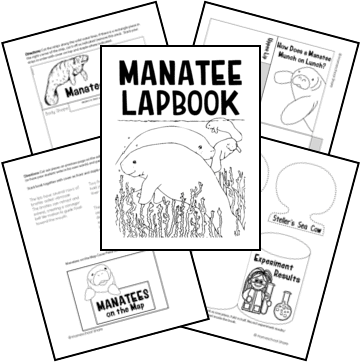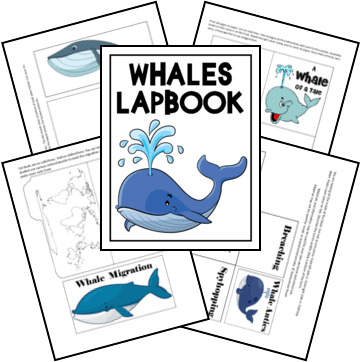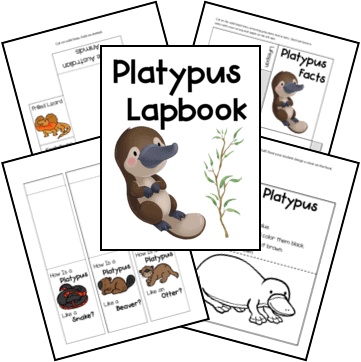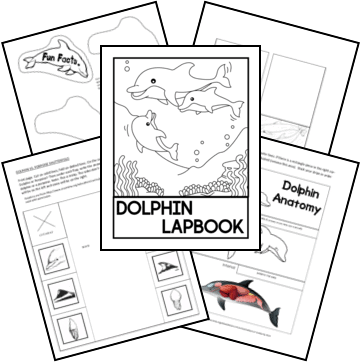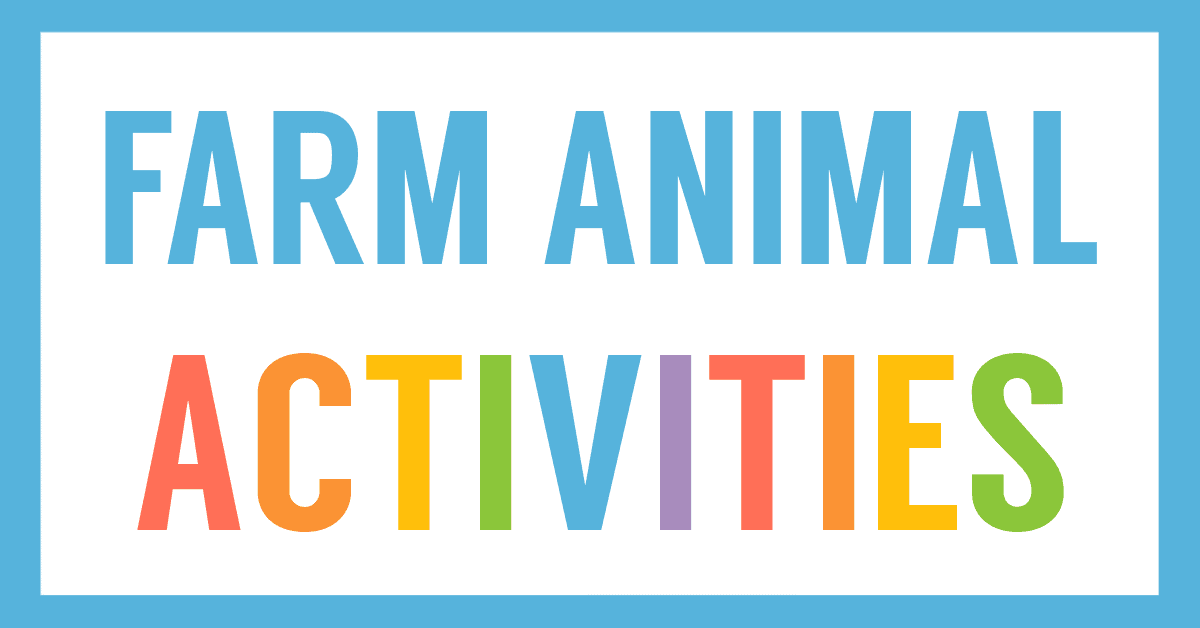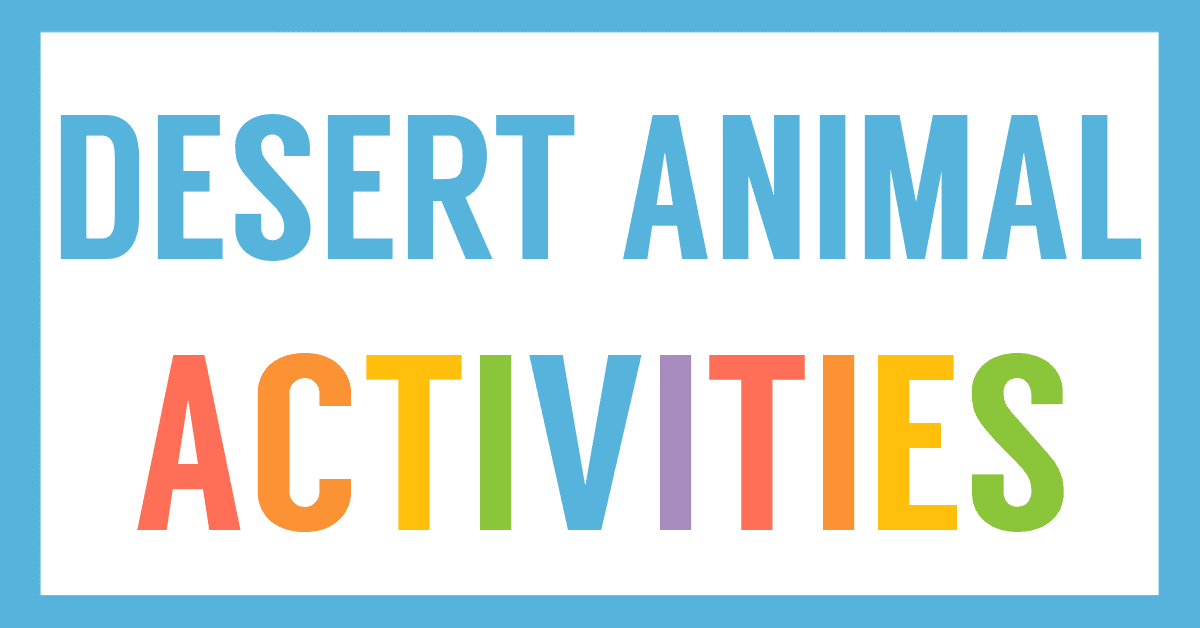Affiliate Disclaimer
We sometimes use affiliate links in our content. This won’t cost you anything, but it helps us to keep the site running. Thanks for your support.
Learn all about the gentle giants of the sea with our Manatee Lapbook.
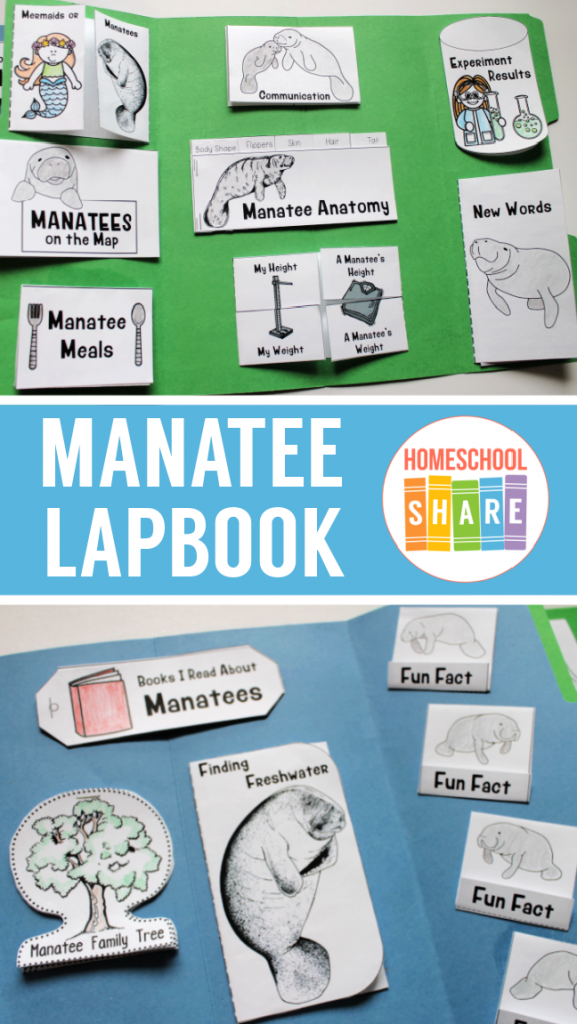
Thanks to Cate Proudfoot for writing the lessons for this Manatee Lapbook.
Manatee Lapbook Information
Here are some sample lessons from the Manatee Lapbook:
Manatee Characteristics & Anatomy
Manatees are harmless, semi social mammals.
Their bulky, seal-shaped body is nearly hairless except for the stiff bristles that dot the large square snout. Manatees have a thick, wrinkled, grayish brown hide that is often covered with bits of algae.
They have a powerful paddle-shaped tail that looks like an enormous beaver’s tail. Moving their tail with broad up and down strokes allows for graceful swimming. Barrel rolls, banking turns and other moves are achieved by curling or twisting their tail.
Front flippers are used to steer or even “crawl” through shallow water. At the end of each flipper are three or four fingernails. Fingernails are a very unique feature in underwater mammals. Flippers also come in handy when gathering food into their mouth. Manatee mothers use flippers to hold their babies close.
Adult manatees grow 10-12 feet long and weigh 1,200 – 2,200 pounds. Females typically are larger than males. The longest ever recorded was almost 14 feet long and the heaviest was over 3,500 pounds.
Manatees have excellent hearing. They hear from tiny holes just behind their eyes. (Some scientist believe they do not hear from the tiny holes but rather an area near their large cheekbones. Research is still being conducted to determine which is correct.) Sound travels faster (around six times) under water than it does in the air. Hearing sounds are very important for a mother and her calf to stay together in murky water.
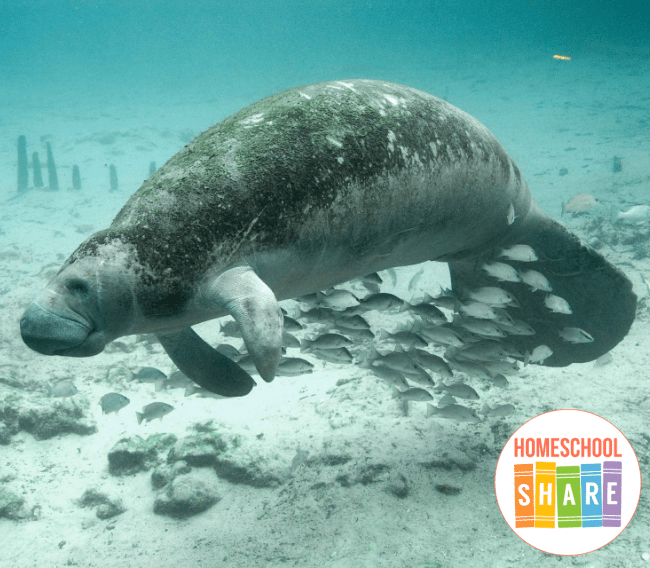
Salt Water vs. Fresh Water
Manatees can live in salt water or fresh water! However, they drink only fresh water. If they are in salt water for extended periods of time, they must find a source of fresh drinking water. Swimming inland to rivers or canals can be one way to find fresh water. Siphoning fresh water that is floating on salt water, like water from rain, is another way they find a drink.
To demonstrate this concept try an experiment.
- Gather 1 large glass, salt, food coloring and a medicine dropper.
- Pour 8 ounces of tap water into the glass.
- Mix 8 tablespoons of salt in the glass of water.
- In a separate glass, mix water and food coloring. This will be the fresh water, like rain.
- Using a medicine dropper, slowly drop the colored water on top of the salt water.
- Have your student record the results.
Salt water is denser than fresh water, so the colored (fresh) water should remain on the surface of the salt water.
You can grab a copy of the entire Manatee Lapbook in an easy-to-print file at the end of this post.
Manatee Lapbook Printables
The manatee study includes a variety of mini-books for your student to create a lapbook.
- Manatee Meals Tri-fold Book
- Books I Read About Manatees Fan Book
- Family Names Triangle Petal Book
- Danger! 3/4 Book
- How Does a Manatee Munch on Lunch Tab Book
- Manatees on the Map Simple Fold
- Manatee Family Tree Shape Book
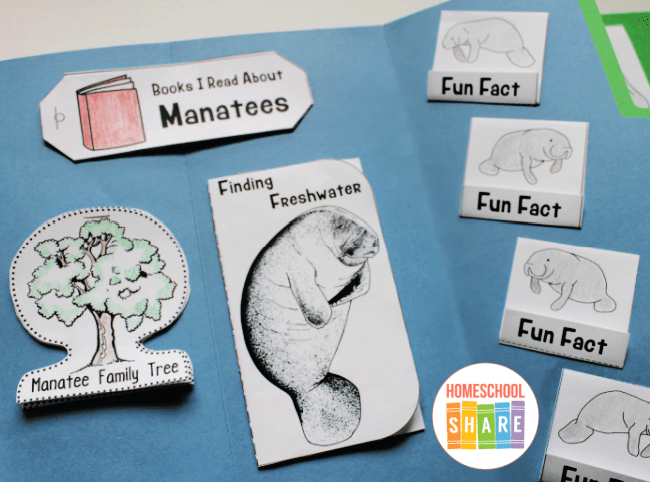
- Experiment Results Simple Fold Book
- Manatee Fun Fact Matchbooks
- Finding Freshwater Accordion Book
- Communication Book
- Mermaids or Manatees? Shutter Book
- Manatee Anatomy Tab Book
- And more!
Lapbook Example
This lapbook was made with two file folders. If you are new to lapbooking, check out our How to Make a Lapbook Guide.
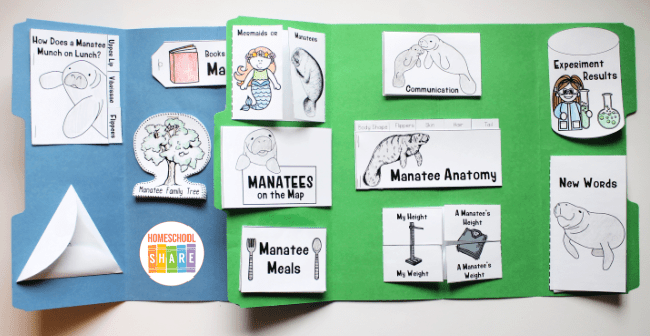
Note: This lapbook example does not include all of the mini-books. You can pick and choose the mini-books best suited for your Manatee study.
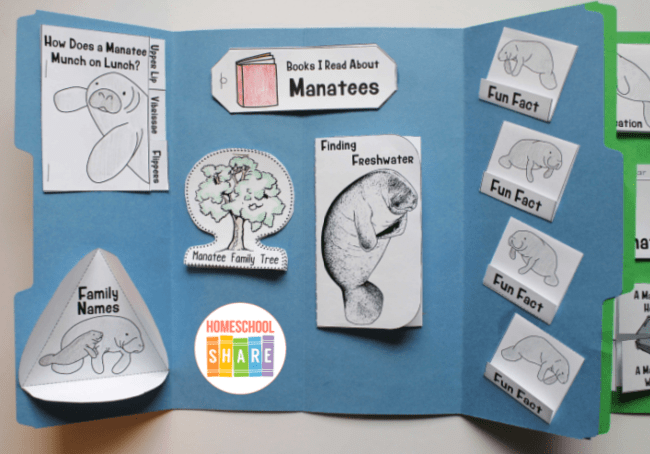
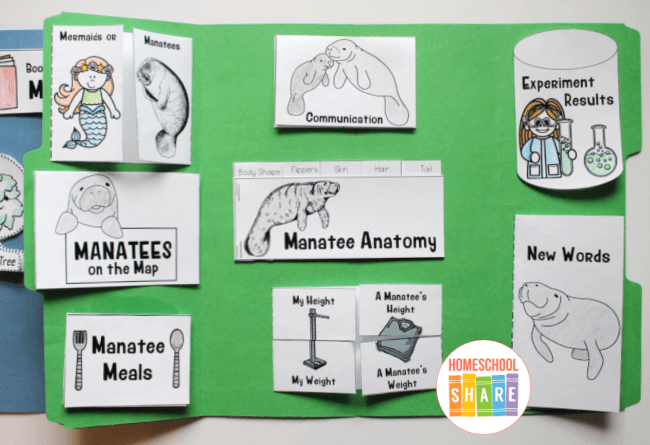
How to Get Started with Your Lapbook
Follow these simple instructions to get started with the lapbook.
- If you want, go to your local library and check out books about manatees (also known as sea cows).
- Print the Manatee Lapbook.
- Choose and prepare the mini-books you want to use with your student.
- Enjoy a week of reading and learning all about marvelous manatees.
Download Your Free Manatee Lapbook
Simply click on the image below to access your free Manatee Lapbook.
Explore More Aquatic Mammals
We don’t typically think of mammals as animals who can live in the water, but lots of mammals do. Check out these other animal lapbooks based on aquatic mammals.

